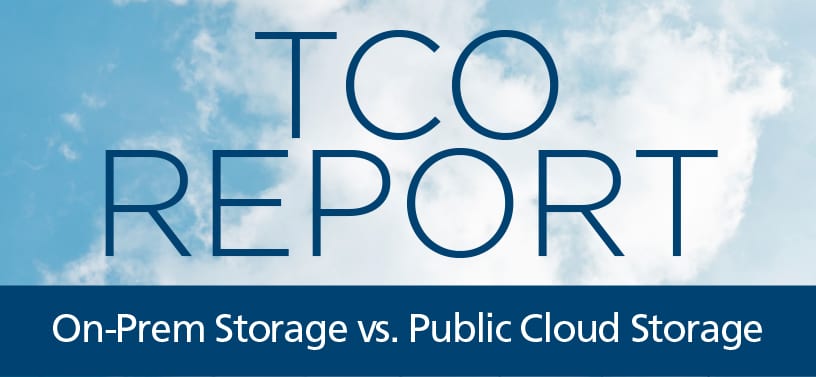The Economic Advantages of On-Premises Object Storage vs. Public Cloud for Enterprise Data Protection, Backup, and Archive
Much has been written about the benefits and growing adoption of public cloud by enterprises for their IT application workloads. What hasn’t received a lot of attention though is how this move to cloud is impacting data storage strategy and associated costs. This topic should become increasingly important given the surge in enterprise data volumes and the need for its protection. According to IDC, the amount of data worldwide is growing at a staggering pace and is expected to grow more than 5 times in size in the next five years, from 33 zettabytes today to 175 zettabytes by 2025. What makes this more important is that 80% of data growth, according to estimates by Gartner, is unstructured data which includes video, voice recordings, media files, life science and healthcare data, social media, IoT and sensor data, and much more. Since unstructured data can be cost-effectively managed by object storage, the massive increase in data volume is driving a corresponding need for more object storage to handle the growth. Public cloud which is built on object storage is an option. But the majority of organizations — roughly 58%, according to a survey by 451 Research — are moving to a hybrid strategy, seeking to leverage both on-premises and public cloud resources to suit their needs.
In this context of an always-on, data-intensive world, with enterprise data increasingly critical to modern business operations, enterprise IT plans not only need to reflect where best to locate this data – public cloud and / or on-premises — but to do so in a cost-efficient manner while also ensuring it is well protected. The massive growth in unstructured data volume coupled with security threats and changing regulations makes enterprise data protection challenging. This is putting more pressure on organizations to update their data protection infrastructure, including associated storage, to meet current, as well as future, needs.
Cloudian took a close look at this and compared the economics of on-premise object storage with public cloud storage for the purpose of enterprise data protection. First, we looked at the features and capabilities of on-premises storage and public cloud to see how they compare. Then, using a realistic data protection scenario, we analyzed the total cost of ownership (TCO) to determine which storage option is the most cost-effective for current as well as future enterprise data protection needs.
Key takeaways in our recently published report:
- 5-year TCO reveals Cloudian on-premises data storage is 65% less costly than public cloud storage
- Cloud data access costs have a significant impact to overall TCO
- On-premises storage enables faster data recovery / data restoration with low latency local storage
- Data durability for Cloudian on-premises object storage can be achieved at 11 nines and greater
- Comprehensive control of on-premises storage can provide improved security, privacy, and compliance vs. public cloud.
For the full details and to learn more, you can find our report here: https://cloudian.com/lp/tco-report-on-prem-vs-public-cloud-for-data-protection/
—————————————–
Grant Jacobson
Director of Alliances
Cloudian




